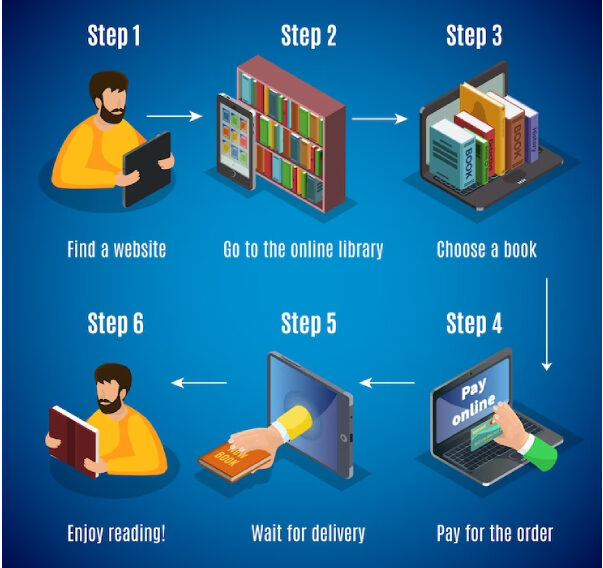In today’s fast-paced world, educators and librarians often find themselves faced with the challenge of delivering concise and impactful lessons within a limited timeframe. With the rise of short, 30-minute library lessons becoming more prevalent, it becomes essential to employ effective strategies and techniques to ensure optimal learning outcomes in this compact window. This article aims to explore various approaches that maximize the impact of these time-constrained sessions. From setting clear learning objectives and choosing engaging topics to incorporating technology and employing interactive activities, we will delve into a comprehensive guide for educators to structure and deliver dynamic 30-minute library lessons that captivate learners and foster meaningful learning experiences. By the end, you’ll be equipped with the tools to make the most of every minute and leave a lasting impression on your audience.
Setting Clear Learning Objectives: Defining The Purpose Of Your 30-Minute Lesson
To begin with the 30-minute library lesson method, it is essential to set clear learning objectives that outline the specific outcomes you aim to achieve within the limited timeframe. Define what knowledge or skills you want your learners to gain by the end of the session. Clear objectives help focus your lesson and guide the content selection process. Consider the scope of the lesson and ensure that it aligns with the overall learning goals for your library program or curriculum. By defining your objectives, you provide a roadmap for both yourself and your learners, enabling you to maintain focus and deliver a concise and purposeful lesson.
Choosing Appropriate Topics: Identifying Engaging And Relevant Subjects For Short Lessons
Selecting appropriate topics is crucial for capturing the attention and interest of your learners during a 30-minute library lesson. Consider subjects that are timely, relevant, and engaging for your audience. It’s essential to balance complexity with the time available, opting for topics that can be effectively covered within a short duration without compromising depth and quality. Look for subjects that resonate with your learners’ interests or address current issues they might find meaningful. By choosing engaging and relevant topics, you can create a positive learning experience that leaves a lasting impact on your audience, despite the time constraints.
Structuring Lesson Plans: Organizing Content For Effective 30-Minute Delivery
Structuring your lesson plan is a critical step in ensuring a smooth and effective 30-minute library lesson. Divide the lesson into logical sections, including an introduction, the main content, interactive activities, and a conclusion. In the limited time available, it’s essential to maintain a clear and concise flow, avoiding unnecessary tangents. Use headings and bullet points to organize information, making it easier for learners to follow along. Consider the pacing of the lesson, allocating time for each section accordingly. A well-structured lesson plan enables you to stay on track, making the most of the available time and optimizing learning outcomes.
Creating Engaging Introductions: Hooking Learners From The Start
With only 30 minutes to capture learners’ attention, a compelling introduction is key to setting the tone for your library lesson. Begin with a thought-provoking question, an intriguing fact, or a relatable anecdote that piques learners’ curiosity. Engage them from the very start and make a strong connection between the topic and their lives or interests. A captivating introduction not only motivates learners to stay engaged throughout the session but also creates enthusiasm for the subject matter. It sets the foundation for a successful and immersive learning experience within the time constraints of a short lesson.
Utilizing Interactive Activities: Fostering Participation In Limited Time
In a 30-minute library lesson, it is essential to keep learners actively engaged to maximize their learning experience. Incorporating interactive activities, such as group discussions, brainstorming sessions, role-plays, or short hands-on tasks, helps keep learners involved and encourages active participation. Interactive elements break the monotony of traditional lectures and foster a dynamic and inclusive learning environment. These activities also promote collaboration among learners, allowing them to share their ideas and learn from one another. By leveraging interactive activities, you can create a dynamic learning atmosphere that maximizes engagement and retention within the short duration of the lesson.
Incorporating Technology: Enhancing Learning With Digital Resources
Technology can play a significant role in enhancing the effectiveness of 30-minute library lessons. Integrate digital resources such as interactive presentations, online quizzes, educational videos, or virtual simulations to supplement your lesson content. Leveraging technology enables you to present information in engaging and innovative ways, catering to diverse learning styles. Additionally, it allows learners to access supplementary materials beyond the scope of the limited lesson time. By incorporating technology thoughtfully, you can enrich the learning experience and create a multi-dimensional environment that complements the content within the time constraints.
Effective Time Management: Ensuring A Smooth Flow In Short Library Lessons
Be mindful of how much time you allocate for introductions, content delivery, interactive activities, and conclusion. Avoid overloading the lesson with excessive information or activities that may exceed the available time. Emphasize key points and focus on essential learning objectives to keep the lesson on track. Practicing effective time management ensures a smooth flow, prevents rushed presentations, and allows learners to absorb the content thoroughly within a limited timeframe.
Assessment Strategies: Gauging Learning Outcomes In 30-Minute Sessions
Even within a short timeframe, it’s essential to assess learning outcomes and ensure that learners have grasped the key concepts. Implement assessment strategies such as quick quizzes, group discussions, or brief reflections to gauge learners’ understanding. Assessments provide valuable feedback on the effectiveness of your 30-minute library lesson and help identify areas that may require further reinforcement in future sessions. By incorporating assessment strategies, you can ensure that the limited time is utilized optimally, promoting active learning and reinforcing the content delivered in a short duration. Incorporating these strategies into the 30-minute library lesson method can lead to engaging and impactful sessions that effectively deliver content, encourage participation, and maximize the learning experience within the time constraints.
Conclusion
The 30-minute library lesson method offers a dynamic and efficient approach to delivering engaging and meaningful content within a limited timeframe. By setting clear objectives, choosing relevant topics, and structuring lessons effectively, educators can create impactful learning experiences for their learners. Utilizing interactive activities and technology enhances engagement, while effective time management ensures a smooth flow of the lesson. Through thoughtful assessment strategies, educators can gauge learning outcomes and reinforce key concepts. Embracing this method empowers educators to make the most of their time, fostering a positive and productive learning environment in the library setting.
Resource Links:
https://meta.wikimedia.org/wiki/The_Wikipedia_Library/1lib1ref/Lessons
https://www.picturebookbrain.com/30-minute-library-lessons/

Francis Burns is an avid writer from Louisiana. With a Bachelor’s in English and a background in journalism, Francis has been writing for a variety of media outlets for the last five years. He specializes in stories about the local culture and loves to fill his work with inspiring words. When not writing, Francis enjoys exploring the outdoors of Louisiana and photographing nature.




